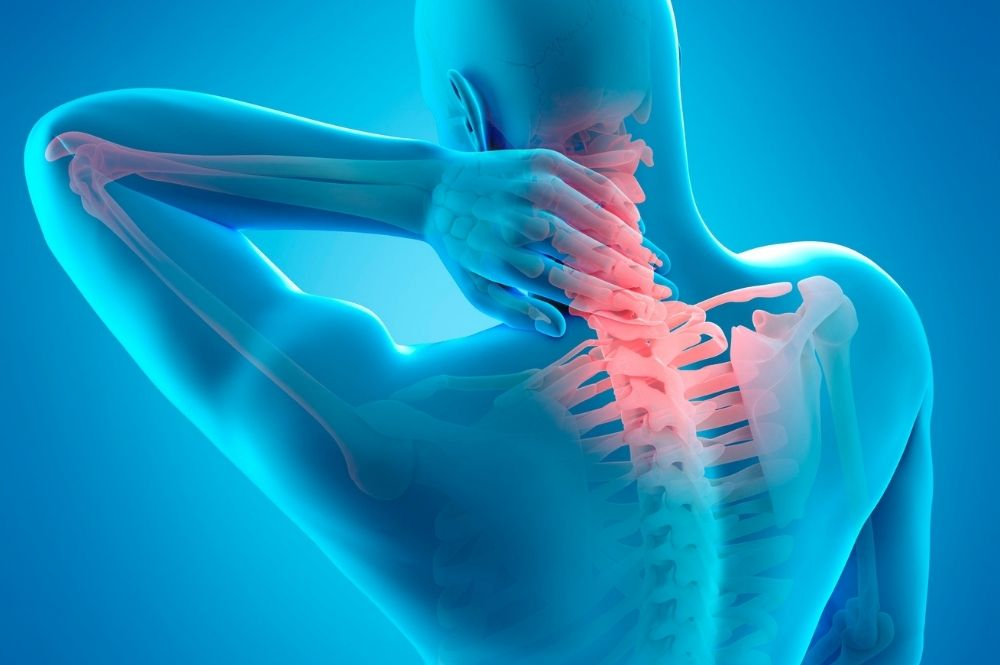


Cervical disc herniation occurs when the discs in the cervical spine (neck region) shift or rupture, putting pressure on the spinal cord or nerve roots. This can lead to symptoms such as pain, numbness, and muscle weakness in the neck, shoulder, arm, and hand.
Function of Cervical Discs
The discs are located between the cervical vertebrae and provide mobility while also acting as shock absorbers.
The outer part (annulus fibrosus) is tough, while the inner part (nucleus pulposus) is gel-like.
Causes
Mechanical Trauma: Sudden movements, heavy lifting, excessive strain on the neck.
Aging: Loss of water content and elasticity in the discs (degeneration).
Genetic Predisposition: Family history of cervical disc herniation.
Postural Problems: Incorrect positions, especially during desk work.
Symptoms
Neck and Shoulder Pain: Can worsen with movement.
Radicular Pain: Pain radiating from the neck to the arm and hand.
Numbness and Tingling: Numbness in the arm or hand due to nerve root compression.
Muscle Weakness: Difficulty holding objects in the arm or hand.
Spinal Cord Compression Symptoms:
Difficulty walking
Loss of coordination in the arms and legs (myelopathy)
Diagnostic Methods
Physical Examination: Assessment of muscle strength, reflexes, and sensory function.
MRI (Magnetic Resonance Imaging): Detailed imaging of the discs and nerve roots.
CT (Computed Tomography): Imaging of the spinal bone structures.
EMG (Electromyography): Used to assess the severity of nerve compression.
Treatment Options
Conservative (Non-Surgical) Treatment:
Physical Therapy: Exercises, traction, heat-cold applications.
Medical Treatment: Pain relievers, muscle relaxants, steroids.
Cervical Collar: Temporary support for the neck.
Injection Treatments:
Epidural steroid injections.
Surgical Treatment (Applied in the following cases):
Severe nerve compression.
Progressive muscle weakness or myelopathy.
Cases unresponsive to conservative treatment.
Anterior Cervical Discectomy and Fusion (ACDF): Removal of the damaged disc and stabilization of the area.
Cervical Disc Prosthesis: Insertion of an artificial disc to preserve movement.
Prevention
Correct Posture: Ergonomic positions, especially when working at a desk.
Regular Exercise: Strengthening neck and back muscles.
Avoiding Heavy Loads: Prevent excessive strain on the neck.
Prognosis
Most cases of cervical disc herniation improve or are manageable with conservative treatment. Surgical intervention provides successful outcomes in appropriate patients and is effective in relieving neurological symptoms.